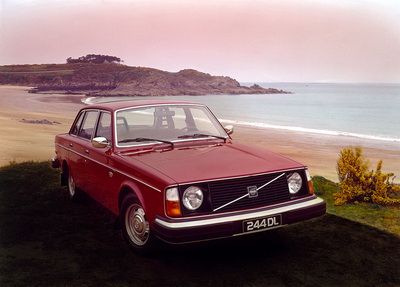
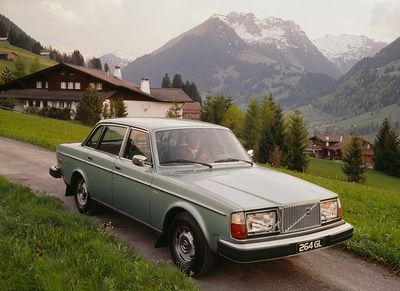
.jpg)
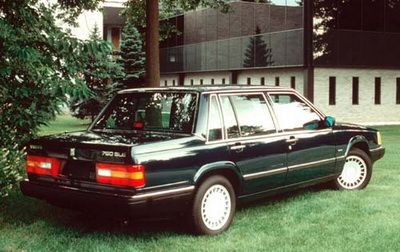
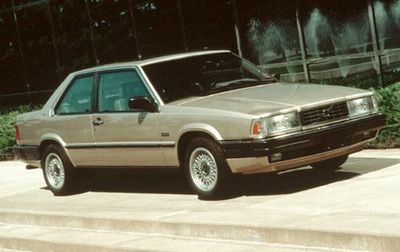
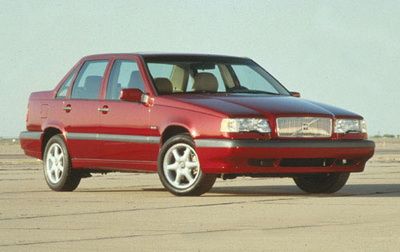
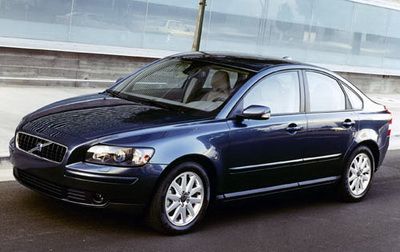
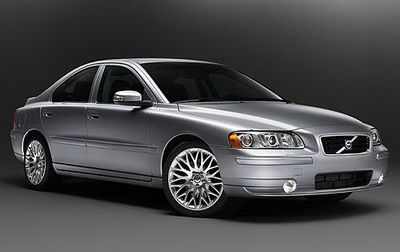
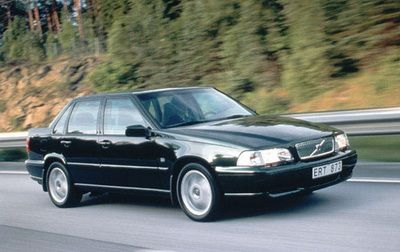
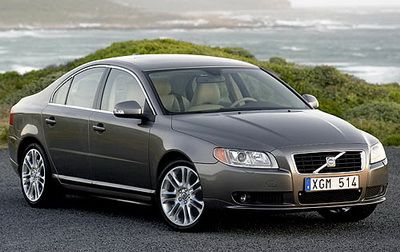
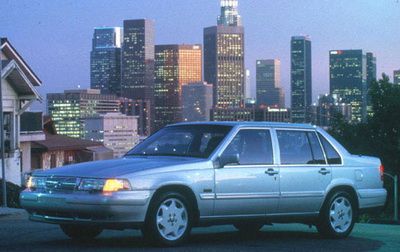
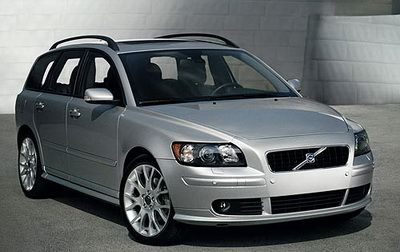
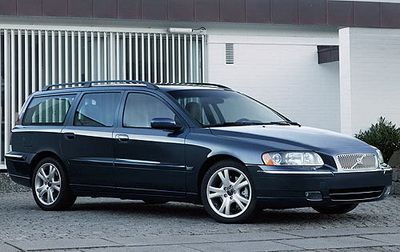
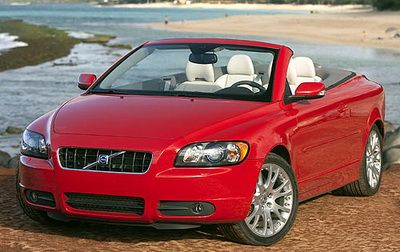
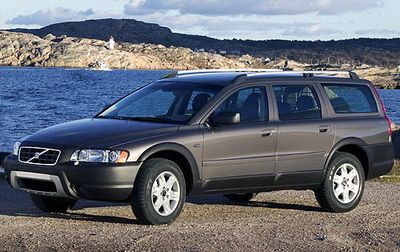
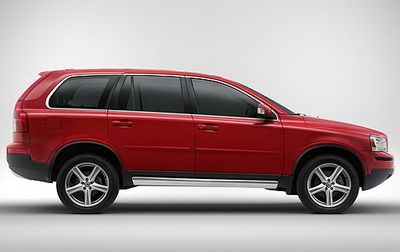
VOLVO 850 MANUAL
VOLVO รุ่นใหม่ ตัวเล็กใจใหญ่ ต็องS40
ประวัติ Volvo
หลังสงครามโลกครั้งที่ 1 นักเศรษฐศาสตร์ชื่อ Assar Gabrielsson และนักวิศวกรชื่อ Gustaf Larson ร่วมมือกันในปี 1924 ที่จะสร้างรถสำหรับคน Swedish การสร้างรถนั้นเริ่มจาก ปี 1926 และวันที่ 14 เมษายน 1927 ก็ได้ออกรถคันแรกของ Volvo คือ ?V4 - ออกที่โรงาน Lundby ในเมือง G?teborg
|
ภาพรถคันแรกที่ออกจากโรงงาน คือ oV 4
|
ภาพประวัติศาสตร์อีกภาพของ Volvo กับ 144 คันแรก
|
|
|
|
การผลิตรถยนต์ของ Volvo นั้นเน้นคำว่าคุณภาพเป็นหลัก ดูได้จากการขายอะไหล่ ให้แก่คู่แข่ง โดยยังคงเน้นคุณภาพมาถึงทุกวันนี้ โดยคันแรกคือ ?V4 ที่มีรถ รถบรรทุก และรถบัส และถัดมาออก PV444 ถือได้ว่าเป็น Volvo คันแรกที่ขายดีของชาวสวีดิช หลังสงครามโลกครั้งที่ 2
1927 Volvo ออกรถคันแรกจากโรงงาน คือ ?V4 ชื่อเล่น Jacob
1928 Volvo ออก LV40 รถยนต์ Truck คันแรก
1929 Volvo ออกรุ่น PV651
1930 Volvo เข้าเป็นผู้ถือหุ้นใหญ่บริษัท AB Pentaverken, Sk?vde
1935 Volvo ก่อตั้ง Volvo Penta ที่เมือง G?teborg และผลิตเครื่องสำหรับเรือ และปีนั้นก็ได้ออกรถยนต์รุ่น PV36 ชื่อเล่นว่า Carioca
1941 Volvo กลายมาเป็นผู้ถือหุ้นหลักของ Svenska Flygmotor AB. (Volvo Aero Corp.)
1944 Volvo ออกรุ่น PV60 ชื่อเล่นคือ Yankee car และออก PV444/544 เป็นรถที่ประสบความสำเร็จรุ่นหนึ่งของ Volvo ขายได้ 440,000 คัน
1946 Volvo ออกรถบรรทุกเครื่อง diesel ครั้งแรก LV150
1955 Volvo ออกรถ Sport คันแรก คือ P1900
1956 Volvo ออกรุ่น PV 121 และ PV 122 ชื่อเล่นว่า Amazon ก็ถือว่าเป็นรุ่นหนึ่งที่ประสบความสำเร็จ ขายได้ 200,000 คันต่อปี
1959 Volvo P1800 ชื่อเล่นว่า The Saint เป็นรถ Sport จริงๆที่ Volvo ผลิตจนถึงทุกวันนี้ โดยผลิตจากโรงงานที่ Uk
1966 Volvo ออกรุ่น 144 เป็นรถที่เปลี่ยนโฉมหน้าของ Volvo คือเป็นรถที่เน้นความปลอดภัยเป็นหลัก คือ ที Disc Brake รอบคัน และเข็มขัดนิรภัย 3 จุด
1974 Volvo เริ่มออก Series 240 เป็นรุ่นแรกของ Volvo ที่มีการใส่ Turbo และมีการส่งรถเข้าแข่งรายการต่างๆ
1975 Volvo ออกรุ่น 66
1976 Volvo เริ่มออก Series 340
1979 Volvo Aero ออกเครื่องบินยนต์สำหรับ JA37B Viggen ซึ่งเป็นเครื่องบินรบ
1980 Volvo ออก Series 200 ใหม่
1981 Volvo ออก Series 300 ใหม่
1982 Volvo เริ่มออก Series 740 ถือเป็นรุ่นชูธงของ Volvo รุ่นหนึ่ง โดยรุ่นหลังจากนี้ยังคงมีกลิ่นไอของรุ่นนี้ตลอด
1985 Volvo เริ่มออก 480
1987 Volvo ออก Sereis 300 โฉมใหม่ และ Series 700 โฉมใหม่
1988 Volvo ออก 400 series
1990 Volvo ออก 900 series
1991 Volvo ออกรุ่น 850
1993 Volvo 400 series โฉมใหม่
1994 Volvo 850 โฉมใหม่ โดยเครื่องยนต์ 5 สูบนี้ออกแบบโดย Porsche และรุ่นนี้ประกาศความร้อนแรงสุดด้วยรุ่น T5R 250 แรงม้า
1995 Volvo ออก Series ใหม่ คือ S40/V40
1997 Volvo ออก Series ใหม่ S70/V70 โดยได้ออก C70 ด้วย
1998 Volvo ออก S80
2000 Volvo ออก V70 โฉมใหม่ กับ ออก S60
Volvo นั้นในตอนหลังปี 1998 โดนซื้อหุ้นบางส่วนไปโดย Ford (มีบริษัทในเครือได้แก่ Lincoln, Jaguar, Land Rover และ Aston Martin) และได้เทคโอเวอร์ บริษัท Scania ดังนั้นได้หันเหไปเน้นการผลิตรถยนต์บรรทุกขนาดใหญ่(โดย Ford ร่วมมือกับ Mitsubishi) มากกว่าที่จะผลิตรถยนต์ทั่วไป ถือได้ว่าเป็นบริษัทผลิตรถยนต์ที่มีลักษณะ Consevetive มาตั้งแต่เริ่ม ต่อมาตั้งโรงงานในประเทศ Holland ถูกถือหุ้นโรงงานหลักโดยรัฐบาล Holland เพื่อผลิตรถขนาดเล็กใน Series 400 มีการขายหุ้นเล็กน้อย 13 %ให้แก่ มิตซุบิชิ และได้ใช้ชิ้นส่วนร่วมกับระหว่าง S40 กับ Mitsubishi Carisma แต่โดยรวมแล้วบริษัทแม่ยังคงถูกถือหุ้นหลักโดย Ford
รุ่น S70 เป็นความร่วมมือในการผลิตกับ Mitsubishi ส่วน S40 / V40 จะถูกกำหนดให้ใช้รูปแบบร่วมกับ Ford Mondeo กับ Jaguar X400
อย่างไรก้ตามมันเป็นยังคงเป็นรถที่ปลอดภัยมากที่สุด เพราะผลการทดสอบการชนกับหลายรุ่นของ Volvo ก็ได้ผลที่ดี และเกือบดีมาโดยตลอด โดยเฉพาะการทดสอบของฝั่งยุโรป รวมถึงการคิดค้น Innovation ใหม่ๆเกี่ยวกับความปลอดภัยเช่น SIPS หรือ Side Impact Protection System เป็นระบบการป้องกันด้านข้าง WHIPS หรือ Whiplash Protection System หรือระบบการรัดสายเข็มขัดนิรภัยเด็กกับเก้าอี้
Volvo was founded by Assar Gabrielsson and Gustav Larson, allegedly during a meal consisting of crayfish, in 1924. Their first car, the 1944cc Jakob, was in production by 1927.
Born in 1891, Gabrielsson had studied economics, and was sales manager for the Swedish bearings company SKF, at the time he joined up with Larson. The latter was four years older, and had worked for automotive company White and Poppe in Coventry, England, from 1911 to 1913, before joining SKF in 1917. In 1920 he left and was working as technical manager for AB Galco when he was reunited with Gabrielsson.
The scheme was to build a vehicle more suited to the Scandinavian climate than were US imports, utilizing high-quality Swedish steel and bought-in components. Gabrielson financed the completion of ten prototypes, with bodies styled by Swedish artist Helmer Mas-Olle. Marine engineers Pentaverken built and supplied the engines, and SKF was sufficiently impressed to fund the production run of the first thousand cars, built at Lundby, near Gothenberg, from 1927. SKF also allowed the partners to use one of the company's patented names: AB Volvo, which derives from the Latin 'I roll', with its obvious connotations of bearings in action.
The company had planned to build 500 cabriolets and 500 saloons but, in the event, only 205 of the steel-bodied open cars were produced, compared with 721 of the closed fabric-bodied PV4 models. In 1929, a three-liter straight-six was introduced, designated the PV650, and this enjoyed and eight-year production run until 1937, during which time there were capacity increases to 3.2 and 3.6 liters, with a few long-wheelbase chassis made for specialist coachbilders. The PV36 of 1936 bore a similarity to the Chrysler Airflow.
Concurrently Volvo was also producing 1.5 ton trucks, from 1928, and a range of taxis known as TRs, based on the PV4. The trucks actually outsold the cars until World War II.
By 1932, the company was in profit and operating from its own factory; output was well over 900 cars a year, although demand slackened slightly due to economic factors during the mid-1930s. SKF relinquished control of Volvo with a stock flotation in 1935, and at the same time Volvo took over Pentaverken which, as AB Penta, became in 1949 the marine-engineering unit of Volvo.
Sweden's neutrality allowed Volvo to maintain production during WWII, although the production figure of 2,834 cars in 1939 fell back to a low of 99 in 1942. The 50,000 Volvo was a truck, built in 1941.
Volvo's first post-war car was the stylish PV444, which had been conceived in 1942 and featured independent front suspention and coil springs at the rear. This proved an important model in that it gained Volvo a foothold in the US. For the first time, cars outsold trucks, prompting a major investment program which saw several derivatives of the PV444 produced, including some estates and light commercials. Some 500,000 units were made, including the PV544 development, which was built until 1965, and the PV210 estate which was in production until 1969. In 1958, Volvo invented the 3-point safety belt, considered the most important safety feature of all time.
Not noted for its adventurous styling, Volvo came out with a short fun of 67 glassfiber sports cars, based on the PV444, and styled in the US in 1955 by Glaspar. The project was squashed when the Suez crisis threatened vehicular indulgence.
The company's next venture into the world of the semi-erotic was to be the P1800 coupe of 1961, styled initially by Italian coach builders Ghia and finished off by Frua. To start with, bodies were made by the British firm of Pressed steel after Karmann pulled out, and the vehicles were assembled by Jenson at West Bromwich, near Birmignham, England. However, Volvo found sufficient capacity and resourced to shift production to Sweden in 1963, where the car continued to be made until 1973 in the form of a sporting estate-like car called the P1800ES. The P1800 won lasting fame as the car driven by actor Roger Moore in film adaptations of THE SAINT detective stories, and the 115 bhp engine was also used by Facellia and Marcos sports cars.
Gabrielsson retired in 1956, although he remained chariman until his death in 1962. Larson died in 1968, but the pair had already intiated developement of the P120 series prior to Gabrilsson's retirement. The 121 saloon was known as the Amazon, but only marketed with this nomenclature in Sweden because of a prior claim to the name by German motor-cycle manufacturers Kriedler.
A new factory was built with Swedish Government backing at Torslanda, and opened by King Gustav Adolf in 1964. Volvo had already started to build its cars in Canada and Belguim. The millionth car was an Amazon, in 1966, and in the same year, the 140 series was announced. The six-cylinder 164 appeared in 1968 and, by 1970, the Amazon was phased out. The 144s were updated to become 240s in 1974, and a further facelift produced the 244 saloons and 245 estates, which also now include diesel and turbocharged options. The 260 series of 1974 was fitted with the PRV 2.7 liter V6 engine, a unit developed jointly by a consortium of Peugeot, Renault, and Volvo.
By 1983, output has reached five million cars, and included the 760 series, launched in 1982. These somewhat angular cars were powered by a 2.8 liter V6 diesels from VW, or turbocharged 2.3 liter fours, and a spacious estate followed in 1985.
The same year's Geneva auto show also saw the launch of a Bertone-designed 780 coupe, based on the 760 wheelbase. This was hardly a sports model, although it did preface the introduction in 1986 of the Volvo 480ES, a front-drive hatchback which was conceptually rather similar ot the P1800 ES. The 480 used a 1.7 Renault engine, and was built in the Netherlands at the Volvo BV plant.
This particular factory came into Volvo ownership when the company acquired a 75% stake in DAF's car division. Volvo had started negotiations with DAF as early as 1969, and gained its controlling interest after a series of financial moves. In 1976, DAF's four-cylinder Variomatic -transmission 66 model became a Volvo, heralding the introduction of the rather mundane 340 series. By 1981, the Dutch government had invested sufficient capital in the company to reduce Volvo's stake to a 30% share.
Throughout the '80s, Volvo launched several new models, including the extremely popular 240, the 740, the 760, the 940, and the 960 (later the S90). These cars were very rectangular, and most were luxurious.
As Volvo started the 1990s, much speculation surrounded it regarding a possible deal with Renault. The deal was to take advantage of economies of scale and maximize the benefits of joint activities in purchasing, with a target of raising the number of shared parts suppliers, and therefore shared components, in order to reduce product costs. The planned link would have put the Renault-Volvo group as the third largest manufacturer in Europe with a 12.3% market share. In the event, the link-up never took place.
In 1992, a new car, the 850, was launched. The 850 was a big departure for Volvo. Unlike its previous large cars, the 850 was front-drive and used an all-new five-cylinder engine. Top of the range was the 850 T5 with a turbocharged 2.3 liter engine. Performance was astounding, and surprised many drivers. The 850 was the first car in the world to have side airbags, too. The car still had Volvo's traditional angular styling, albeit updated, but had the performance of a real sports sedan. Volvo entered the T5 estate in the BTCC (racing) where it competed very succesfully against much sportier-looking cars. (The S40 eventually replaced this car in racing).
By the late 1990s, Volvo had dropped the 3-figure model names and extended its range. The biggest shock was a Volvo with curves. The S/V40 range was the result of a joint venture with Mitsubishi. The styling of the car was much more up to date than its predecessor, the 440. In fact, the V40 wagon was named most beautiful estate car by an Italian magazine.
The 850 was facelifted in 1996 with two new cars, the S70 sedan and the V70 wagon. These two cars advanced Volvo technology by adding 4-wheel drive to the list of options availiable on Volvo cars. A variant of the wagon, the V70XC, was created to battle the now growing sport-utility market. It's suspention was higher than the V70's, and it had added plastic to make it look more macho.
In 1998, Volvo introduced two new cars. The first car was an off-shoot of the S70; it was a coupe named the C70. This car was beautiful, and easily competed with rivals BMW and Mercedes. (a Convertible was launched later) The second car that was introduced by Volvo was the S80. The S80 was on an entirely new platform. The S80 was the replacement for the S90, but it was completely different. For one, it was extremely good looking, with no angles, all curves. It introduced two new safety features: whiplash protection and side impact curtain airbags. It was Volvo's safest car ever.
The S80 recorded huge sales across the world, and it was the first Volvo ever that was really able to compete with BMW and Mercedes, other than the C70.
In 1999, Volvo was bought by Ford.
In the year 2000, Volvo introduced a new wagon, the V70, based on the S80 platform. It was a completely new replacement for the old 850-based V70. It also was the best handling Volvo ever, according to many organisations. Later that year, Volvo would introduce a facelifted version of the S40/V40 and a smaller replacement for the S70, the S60.
Volvo Cars History
-
The Volvo with four world-firsts turns 20
2011-06-09
After presenting its first front-wheel drive Volvo model – the 480 – in 1985, Volvo Cars continued its comprehensive product and production-technology transition with its next project, launched on June 11, 1991: the Volvo 850 GLT. The car with four world-firsts – one at the front, one at the rear and two in the middle.
New car through and through
Like the 480, the larger 850 was also a result of the over-riding, long-term strategic Galaxy project within which future Volvo models were being developed. In brief, Galaxy resulted in the 400 and 850 Series since work on them took place both at the Volvo Car Corporation in Göteborg, resulting in the car that became the 850 as well as the 900 with its conventional technical layout, and in the Netherlands, where Volvo Car B.V. developed the 400 Series.

Although looking very familiar, the Volvo 850 GLT was new in every respect, from the inside and out.
The Volvo 850 actually carried over nothing at all from previous Volvo models apart from its name. It represented a total departure from its predecessors and the other models in the range in virtually every respect. From the newly developed and modularly constructed all-aluminium engine range – whose first result was the 3-litre in-line six that was fitted to the Volvo 960 in late summer 1990 – a five-cylinder 170 hp variant was created. It was installed transversely in the new car, in a separate sub-frame, and drove the front wheels via an unusually compact gearbox fitted alongside the engine. This was world-first number one.
The rear suspension was attached to a new type of multilink axle called the Delta Link, which cleverly combined the comfort and pliant ride of independent suspension with the live rear axle’s stability and constant track. World-first number two. Safety was naturally a high-priority area and the Volvo 850 took a giant step forward in this respect, not least thanks to the two world-firsts in the middle of the car: the integrated SIPS side-impact protection system and the ARH automatic height-adjustable safety belt mechanism.
What is more, Volvo had invested immense effort in designing a truly lively car that offered plenty of keen driving pleasure, even tuning the exhaust note to enhance the car’s sporty credentials. Behind the wheel, the cockpit was now more driver-focused than in previous models. Generous support for the left foot made enthusiastic driving easier, as did the car’s excellent dynamic properties.

The design of the 850 showed only relatively modest departures from classic Volvo lines. There was no doubt this was a Volvo, yet it looked entirely new in every respect. The new car’s heritage could be clearly seen at the front and rear, while several interesting solutions contributed to a cohesive overall impression such as the unusual side window treatment and the new type of bonnet with integrated grille that became a standard feature of Volvo models for many years to come.
Production start in Belgium
For the first time in Volvo’s history – with the exception of early P1800 production at Jensen in Britain – the new model was initially built in a non-Swedish factory – the Volvo 850 GLT first went into production in Ghent, Belgium. The company’s Swedish factory in Torslanda took over part of the production output later on. From the production-technology viewpoint too a number of new features had been developed to improve and streamline the production process, such as increased use of robots and automation, the use of lasers for measurement, cutting and welding, and larger one-piece body pressings than ever before. The car’s technical layout also made assembly easier: the marriage-point was made fully automated and all “under-up” work (working above shoulder height) was eliminated.
The 850 was launched in the sporty GLT version, with a 20-valve naturally aspirated engine producing 170 hp. The introductory price on the Swedish market was 187,900 kronor "ready for the road" – it was keenly priced midway between the 940 and 960 – so its sales success was assured right from the outset, even on Volvo’s most important export market, the USA. Car tests the world over delivered a unanimous verdict: the new Volvo appealed to everyone and the 850 reaped a formidable harvest of international awards – almost 50 all told.

Introduced in February 1993, the Volvo 850 Estate became an immediate hit and brought the Volvo estate cars into a new era of safety, comfort, versatility and design.
Model range with many variants
In true Volvo fashion the model quickly underwent considerable development in terms of both breadth and depth in order to appeal to a wide customer base. By summer 1992, in time for model year 1993, a somewhat detuned model known as the GLE was introduced, featuring a 10-valve version of the five-cylinder engine producing 140 hp. Half a year later an estate car version of the GLT and GLE hit the showrooms, packed with innovative solutions to enhance both flexibility and safety. The estate model was the first to feature large vertical tail lamp stacks that covered the entire D-pillar from the lower edge of the tailgate window all the way up to the roof line, a solution that Volvo’s five-door cars still use.
In time for the 1994 model year the company launched a high-performance model known as the 850 Turbo (or T-5 as it was known outside Sweden) together with somewhat gentler body lines with altered bumper contours for all versions. The Turbo model delivered 225 hp and 300 Nm of torque, and if that was not enough an even higher-performance version was unveiled at the Geneva motor show in 1994: the 850 T-5R in eye-catching yellow livery. The limited production run of 2500 cars with the 240 hp engine was swallowed up immediately and was succeeded by 2500 cars in black, which also disappeared from showrooms at a rapid pace, followed finally by the last run of 2500 dark green T-5R cars.

The yellow 850 T-5R was the first car in a series of very dramatic and high-performning Volvo saloons and estates, and marked the start of the R-Line cars which are still offered. Later that year another world-first was introduced in the 850 Series: side airbags integrated in the front seats – a feature known as the SIPS bag that soon made its way into the rest of the Volvo range.
Increased demand for more horsepower and higher torque was met with the 1996 models: the 850 R with 250 hp and the 850 TDI which was powered by a five-cylinder diesel engine. Another very pleasant addition to the 850 Series was the 193 hp light-pressure turbo that was installed in another variant that broke new ground for forthcoming Volvo models: the four-wheel drive 850 AWD.
1996 was also the last year for production of cars with the “850” badge. In November the 1997 model range was launched as the S70 sedan and V70 estate car. This new updated generation was also the first to use Volvo Cars’ new model nomenclature. In terms of appearance they resembled their 850 predecessor but under the skin there were major changes.
Between 1991 and 1997 no less than 716,903 cars bearing the 850 badge were sold, and the last Volvo models to be built on this “old” technical platform were the C70 coupé and convertible in 2005.

Back on track – In 1994 Volvo made a racing come-back and entered the 850 estate in the Britsih Touring Car Championship. It didn't win but it certainly got the most attention of all the cars in the series.
Investment for the long term
It has been said that the Volvo 850 with its 15 billion kronor investment bill was the largest Swedish industrial project ever at the time. That is correct, but also not entirely true. This was not the price tag for the car but for Volvo Cars’ future: the figure encompassed not only an entirely new technical platform but also, crucially, investments in production technology and plants, such as the all-new Skövde engine factory that today supplies Volvo Cars with engines that are a further development of the modular units developed for the Galaxy project. The 850 thus completely reshaped Volvo’s product strategy – and indirectly continues to do so to this day. No single Volvo model has meant as much to the company from the viewpoint of technical innovation as the Volvo 850 did. It was a car that in many respects was far ahead of its time yet in other respects was exactly right for its time. It was launched 20 years ago – and with its launch Volvo Cars entered a new era.

What a classic beauty! A 1996 Volvo 850 R saloon is waiting to unleash all its power, for the joy of the driver.
VOLVO 850 Manual



